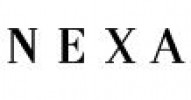Filter interviews by
AVL Interview Questions and Answers
15 Interview questions
Dynamic sales professional with a proven track record in driving revenue and building strong client relationships.
Background: I have a degree in Business Administration, which provided me with a solid foundation in sales and marketing principles.
Experience: Over 5 years of experience in sales, where I consistently exceeded targets by 20% through effective strategies.
Skills: Strong communication and negotiation ski...
There are 7 clauses in ISO 9001:2015.
ISO 9001:2015 has 7 clauses that outline the requirements for a quality management system.
These clauses cover areas such as context of the organization, leadership, planning, support, operation, performance evaluation, and improvement.
For example, Clause 4 focuses on understanding the organization and its context, while Clause 8 addresses operation.
Each clause is essential for ...
Six Sigma is a data-driven methodology for improving processes by reducing defects and variation.
Six Sigma aims to achieve near perfection in processes by targeting a defect rate of 3.4 defects per million opportunities.
It involves defining, measuring, analyzing, improving, and controlling processes to minimize variation and improve quality.
Six Sigma uses statistical tools and techniques such as DMAIC (Define, Mea...
Virtual destructor is used to ensure proper destruction of derived class objects when deleted through a base class pointer.
Virtual destructor is declared in the base class with the 'virtual' keyword.
It allows the destructor of the derived class to be called when an object is deleted through a base class pointer.
Without a virtual destructor, only the base class destructor would be called, leading to memory leaks or...
OOPs stands for Object-Oriented Programming. It is a programming paradigm based on the concept of objects.
OOPs focuses on creating objects that contain both data and methods to manipulate that data.
It allows for reusability, modularity, and flexibility in code.
Key principles of OOPs include encapsulation, inheritance, and polymorphism.
Examples of OOPs languages include Java, C++, and Python.
Maintaining proper project schedule involves effective planning, monitoring, and communication.
Create a detailed project schedule with clear milestones and deadlines
Regularly monitor progress and adjust schedule as needed
Communicate with team members to ensure everyone is aware of their tasks and deadlines
Use project management tools to track progress and identify potential delays
Address any issues or roadblocks p...
Dyn11 is a vector group notation used in transformers to indicate the phase displacement between primary and secondary windings.
Dyn11 is a three-phase transformer with the primary winding connected in delta and the secondary winding connected in star with neutral grounded.
The phase displacement between primary and secondary windings is 330 degrees.
Dyn11 is commonly used in Europe and Asia for distribution transfor...
Reverse a linked list using iterative approach
Initialize three pointers: prev = null, current = head, next = null
Iterate through the linked list, updating pointers as follows: next = current.next, current.next = prev, prev = current, current = next
Update the head to point to the new head (prev)
Commonly used weld symbols include fillet weld, groove weld, plug weld, spot weld, and seam weld.
Fillet weld symbol is a right-angled triangle
Groove weld symbol is a square or rectangle
Plug weld symbol is a small circle
Spot weld symbol is a small circle with a crosshair
Seam weld symbol is two parallel lines
PMP certification is definitely an added advantage for a Senior Project Engineer.
PMP certification demonstrates advanced project management skills and knowledge.
It shows commitment to professional development and continuous learning.
Employers often prefer candidates with PMP certification for senior roles.
Having PMP certification can lead to higher salary and career advancement opportunities.
AVL Interview Experiences
20 interviews found
(4 Questions)
- Q1. Commonly weld symbols used
- Ans.
Commonly used weld symbols include fillet weld, groove weld, plug weld, spot weld, and seam weld.
Fillet weld symbol is a right-angled triangle
Groove weld symbol is a square or rectangle
Plug weld symbol is a small circle
Spot weld symbol is a small circle with a crosshair
Seam weld symbol is two parallel lines
- Q2. Fabrication drawings considerations
- Q3. Provide structural methodology
- Ans.
Structural methodology involves analyzing, designing, and testing structures to ensure they meet safety and performance requirements.
Analyze the structural requirements and constraints of the project
Design the structure using appropriate materials and techniques
Perform simulations and tests to validate the design
Iterate on the design based on test results and feedback
Document the entire process for future reference
- Q4. Give workflow process for preparing erection drawings
- Ans.
The workflow process for preparing erection drawings involves gathering project information, creating initial sketches, obtaining approvals, and finalizing detailed drawings.
Gather project information such as architectural plans, structural drawings, and specifications
Create initial sketches to visualize the design concept
Obtain approvals from clients, architects, and engineers before proceeding
Finalize detailed drawin...
Interview Preparation Tips
I applied via Referral and was interviewed in Feb 2024. There was 1 interview round.
(2 Questions)
- Q1. They should ask about electronics working in our daily life activities?
- Q2. Transformer work?, AC &DC?
Interview Preparation Tips
(1 Question)
- Q1. Introduce yourself
- Ans.
Dynamic sales professional with a proven track record in driving revenue and building strong client relationships.
Background: I have a degree in Business Administration, which provided me with a solid foundation in sales and marketing principles.
Experience: Over 5 years of experience in sales, where I consistently exceeded targets by 20% through effective strategies.
Skills: Strong communication and negotiation skills, ...
(2 Questions)
- Q1. What is six sigma
- Ans.
Six Sigma is a data-driven methodology for improving processes by reducing defects and variation.
Six Sigma aims to achieve near perfection in processes by targeting a defect rate of 3.4 defects per million opportunities.
It involves defining, measuring, analyzing, improving, and controlling processes to minimize variation and improve quality.
Six Sigma uses statistical tools and techniques such as DMAIC (Define, Measure,...
- Q2. How much clause in ISO 9001:2015
- Ans.
There are 7 clauses in ISO 9001:2015.
ISO 9001:2015 has 7 clauses that outline the requirements for a quality management system.
These clauses cover areas such as context of the organization, leadership, planning, support, operation, performance evaluation, and improvement.
For example, Clause 4 focuses on understanding the organization and its context, while Clause 8 addresses operation.
Each clause is essential for ensur...

(3 Questions)
- Q1. PMP certification added advantage
- Ans.
PMP certification is definitely an added advantage for a Senior Project Engineer.
PMP certification demonstrates advanced project management skills and knowledge.
It shows commitment to professional development and continuous learning.
Employers often prefer candidates with PMP certification for senior roles.
Having PMP certification can lead to higher salary and career advancement opportunities.
- Q2. How you handle team
- Q3. How to maintain proper project schedule
- Ans.
Maintaining proper project schedule involves effective planning, monitoring, and communication.
Create a detailed project schedule with clear milestones and deadlines
Regularly monitor progress and adjust schedule as needed
Communicate with team members to ensure everyone is aware of their tasks and deadlines
Use project management tools to track progress and identify potential delays
Address any issues or roadblocks prompt...
Interview Preparation Tips
Graduate Engineer Trainee (Get) Interview Questions & Answers
posted on 9 Jun 2025
I appeared for an interview before Jun 2024, where I was asked the following questions.
- Q1. Thermodynamics law
- Q2. Types of sensors
- Ans.
Sensors are devices that detect and respond to physical stimuli, converting them into signals for measurement or control.
Temperature Sensors: Measure heat levels (e.g., thermocouples, thermistors).
Pressure Sensors: Detect pressure changes (e.g., piezoelectric sensors).
Proximity Sensors: Sense the presence of objects (e.g., ultrasonic sensors).
Light Sensors: Measure light intensity (e.g., photodiodes, LDRs).
Motion Senso...
- Q3. Working of engines
- Ans.
Engines convert fuel into mechanical energy through combustion, powering vehicles and machinery.
Engines operate on the principle of converting chemical energy from fuel into mechanical energy.
Internal combustion engines (ICE) burn fuel within the engine, while external combustion engines burn fuel outside.
Common types of ICE include gasoline engines and diesel engines, each with distinct combustion processes.
The four-s...
- Q4. Related to project
Interview Preparation Tips
I applied via Campus Placement
(3 Questions)
- Q1. Basic electrical, there usses
- Q2. Why you choose btech, and special your branch?
- Q3. About projects, internship .?
Interview Preparation Tips

(1 Question)
- Q1. Core Knowladge and product specifications
Discussion about new business and techniques
(1 Question)
- Q1. Salary Discussion with previous org.
Interview Preparation Tips
I applied via Recruitment Consulltant and was interviewed before Mar 2023. There was 1 interview round.
(5 Questions)
- Q1. All basics related to cpp Coding logic some puzzles
- Q2. What is oops and explain
- Q3. Virtual destructor and its use
- Ans.
Virtual destructor is used to ensure proper destruction of derived class objects when deleted through a base class pointer.
Virtual destructor is declared in the base class with the 'virtual' keyword.
It allows the destructor of the derived class to be called when an object is deleted through a base class pointer.
Without a virtual destructor, only the base class destructor would be called, leading to memory leaks or unde...
- Q4. DS and its all concepts write code for reverse linklist
- Ans.
Reverse a linked list using iterative approach
Initialize three pointers: prev = null, current = head, next = null
Iterate through the linked list, updating pointers as follows: next = current.next, current.next = prev, prev = current, current = next
Update the head to point to the new head (prev)
- Q5. Memory management
Skills evaluated in this interview
I applied via Recruitment Consulltant and was interviewed in May 2022. There were 2 interview rounds.

(2 Questions)
- Q1. Power train and engine related simulation
- Q2. Meshing standards and quality criteria.
- Ans.
Meshing standards ensure quality of simulation results.
Meshing standards define the size and shape of elements in a simulation model.
Quality criteria ensure that the mesh is accurate and reliable.
Mesh quality can be evaluated using metrics such as aspect ratio and skewness.
Standards and criteria vary depending on the type of simulation and the desired level of accuracy.
Examples of meshing standards include ISO 10303-11...
Interview Preparation Tips
Top trending discussions






AVL Interview FAQs
Tell us how to improve this page.
AVL Interviews By Designations
- AVL Software Engineer Interview Questions
- AVL Engineer Interview Questions
- AVL Senior Engineer Interview Questions
- AVL Sales Officer Interview Questions
- AVL Assistant Manager Interview Questions
- AVL Graduate Trainee Interview Questions
- AVL Design Engineer Interview Questions
- AVL Senior Design Engineer Interview Questions
- Show more
Interview Questions for Popular Designations
Overall Interview Experience Rating
based on 11 interview experiences
Difficulty level
Duration
Interview Questions from Similar Companies
|
Assistant Engineer
56
salaries
| ₹3 L/yr - ₹6.2 L/yr |
|
Engineer
55
salaries
| ₹3.5 L/yr - ₹7.5 L/yr |
|
Assistant Manager
49
salaries
| ₹8.5 L/yr - ₹20 L/yr |
|
Senior Software Engineer
49
salaries
| ₹7.2 L/yr - ₹22 L/yr |
|
Senior Engineer
46
salaries
| ₹5 L/yr - ₹11 L/yr |

Hyundai Motor India Limited

VE Commercial Vehicles

Honda

Yamaha Motor
- Home >
- Interviews >
- AVL Interview Questions













